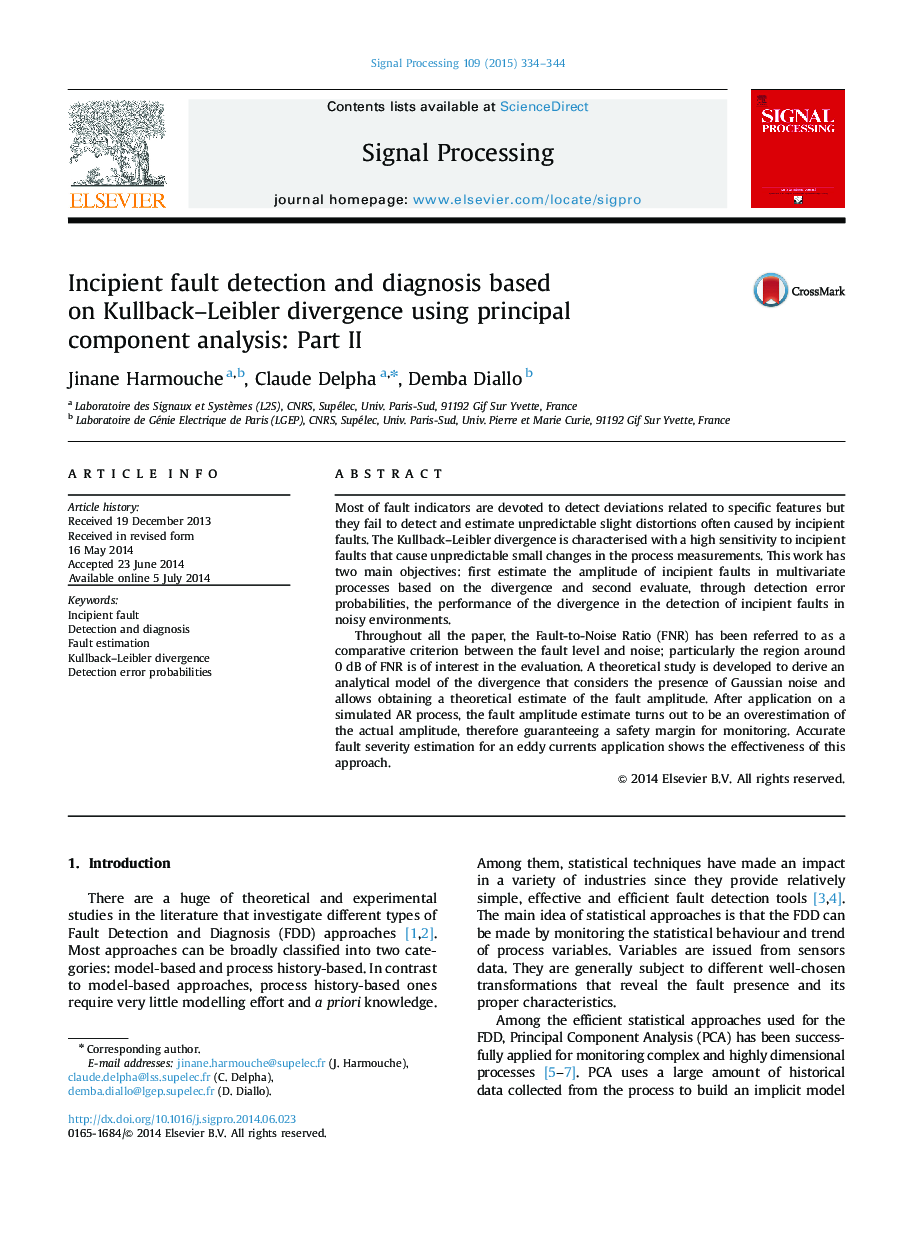| Article ID | Journal | Published Year | Pages | File Type |
|---|---|---|---|---|
| 562899 | Signal Processing | 2015 | 11 Pages |
•We propose to enhance the fault detection approach based on the KLD modelling with the introduction of the noise.•Based on the aforementioned model an estimator of the fault amplitude is developed and validated.•The performances of the detection are studied in a noisy environment with the introduction of the Fault to Noise Ratio (FNR).•The robustness of the proposed method is evaluated with the computation of the miss-detection and false alarms probabilities.•A performed validation of this approach with a simulated AR model is given.
Most of fault indicators are devoted to detect deviations related to specific features but they fail to detect and estimate unpredictable slight distortions often caused by incipient faults. The Kullback–Leibler divergence is characterised with a high sensitivity to incipient faults that cause unpredictable small changes in the process measurements. This work has two main objectives: first estimate the amplitude of incipient faults in multivariate processes based on the divergence and second evaluate, through detection error probabilities, the performance of the divergence in the detection of incipient faults in noisy environments.Throughout all the paper, the Fault-to-Noise Ratio (FNR) has been referred to as a comparative criterion between the fault level and noise; particularly the region around 0 dB of FNR is of interest in the evaluation. A theoretical study is developed to derive an analytical model of the divergence that considers the presence of Gaussian noise and allows obtaining a theoretical estimate of the fault amplitude. After application on a simulated AR process, the fault amplitude estimate turns out to be an overestimation of the actual amplitude, therefore guaranteeing a safety margin for monitoring. Accurate fault severity estimation for an eddy currents application shows the effectiveness of this approach.
